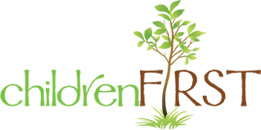These case studies are meant to highlight the type of work we are experienced with as well as the type of clients we serve. Please be aware that names and all other identifying information have been changed. The cases listed here are amalgamations of the various outcomes and treatments of many children we have seen.
Sam: age 15 months at intake (Manhattan)
Background: Sam was referred to us by his developmental pediatrician, and was given an Autism diagnosis. At intake, Sam exhibited no eye contact, vocal language, or gestures such as pointing or waving. His parents were concerned quite young because of the contrast with is twin sister. Sam would hold toys but not interact with them in a functional manner.
Treatment: Sam began an intensive program at 16 months, starting with ten hours weekly and building up to 20 hours of ABA across six days. As such a young child the bulk of his programming involved imitation with toys and teaching how to play with toys. Therapists noticed that as soon as Sam learned to play with a toy in ABA, he would begin to use the toy outside of sessions with his family. Sam’s mother set up his closet to make shelves of toys within his reach. The therapists used these shelves to teach him to point to toys and began modeling the toy name.
Sam spent ten months in a solely home program. The next year, he began to go to a small preschool for six hours weekly, and kept the remaining hours at home. In the final year of treatment, Sam went to preschool every morning and did home sessions in the afternoons. Once he found toy play reinforcing, therapists taught the vocal language using toys. Sam moved from single words to simple sentences in about a year. The final year of treatment, therapists worked on teaching him to answer all question types and engage in cooperative play. His strong interest in toys resulted in him being very motivated during treatment sessions and at preschool.
Today, Sam is in first grade and all ABA supports were faded after three years of treatment. He continues to thrive in a mainstream classroom setting.
Ethan: 3 years at intake (Manhattan)
 Background: We began seeing Ethan at the request of his preschool. Ethan was an extremely verbally precocious child, who was hitting and pushing his classmates without obvious antecedent. Transitions between rooms in the preschool were particularly challenging for the teachers. Ethan was becoming ostracized from his peers due to his hitting and several children in the class would avoid him and cry if asked to sit near him
Background: We began seeing Ethan at the request of his preschool. Ethan was an extremely verbally precocious child, who was hitting and pushing his classmates without obvious antecedent. Transitions between rooms in the preschool were particularly challenging for the teachers. Ethan was becoming ostracized from his peers due to his hitting and several children in the class would avoid him and cry if asked to sit near him
Treatment: Ethan’s BCBA watched classroom dynamics carefully for three sessions. Her data indicated he engaged in aggressive behavior when more than one child was close to him, such as lining up. He also engaged in aggression or pushing of others near him moved quickly or became loud unexpectedly. Finally, he did not tolerate being corrected, even gently such as, “let’s put it down this way instead.”
His therapist systematically taught functional communication to increase tolerance, teaching Ethan to reply with statements such as “that’s ok, let me try again.” For two months, Ethan transitioned between classrooms in the school two minutes ahead of peers to avoid close jostling. During lessons, the teachers provided Ethan with a cubed chair, and he sat with two other peers a foot outside the classroom circle. Finally, the BCBA helped the teachers organize gym games to structure that period such as “Red Rover” and “Duck, Duck, Goose.” Assertiveness language was taught with three peers identified by the teacher as being receptive to Ethan like “that’s too close, please step back.”
After the first couple of months, Ethan was slowly integrated back into the line, initially placed in the back and then in various placements. His aggression had decreased with the BCBA present and she began fading her presence. The teachers took daily data of any aggressive incidents and would consult the BCBA weekly outside of classroom hours. For the next school year, Ethan was placed in a classroom with an extremely organized teacher to minimize transitions and time spent in line. Further treatment was not needed.
Robert: 2 years at intake (Brooklyn)
Background: Roberts was referred by his developmental pediatrician. His family had brought him to her concerned about his minimal language and she diagnosed him with Autism. Robert had approximately five words at intake but would use only 2/3 words in a given week. He did not follow directions. Robert loved books but did not tolerate another person holding the book. He would allow his mom to read to him so long as she didn’t touch his book. He didn’t demonstrate other forms of toy play.
Treatment: Therapists quickly realized that Robert did understand more receptive language than he consistently demonstrated. His words were also inconsistent, some weeks being very articulate and other weeks many words would only have the first sound present. Over two years, the number of words Robert understood and could inconsistently say increased, but his inconsistency in articulation prevented most people from understanding his language. Robert was eventually diagnosed with Childhood Apraxia of Speech. PROMPT therapy was not successful at increasing his clarity. Robert did learn to request in short phrases such as “give me (item)” or “I want (item).” Eventually, a communication device was added to his program and he quickly learned to navigate the screen and move between screens. This decreased his frustration and he would often repeat the verbal output of the device vocally. Over time, many of his ABA programs were moved onto the device. His home team helped him toilet train and with many daily living skills, such as getting dressed.
Roberts was treated for two years at home and eventually enrolled in an ABA school in Brooklyn. He continues to matriculate there and make strides forward. He receives a small number of ABA hours after school.
Contact Us Today
Testimonials
Testimonials on this page and the site are solicited testimonials from professionals we have worked with and former clients.
“Sara Kahn and Dina Danzi are one of the most effective intervention teams in the New York Metropolitan area.”
Gary Mayerson, A Premier NYC-Based Autism Attorney
“Sara and Dina are immediately responsive, knowledgeable and excellent therapists so I always know the children will be getting the best intervention.”
Dr. Jennifer Cross, Developmental Pediatrician, Weill Cornell Medical Center

